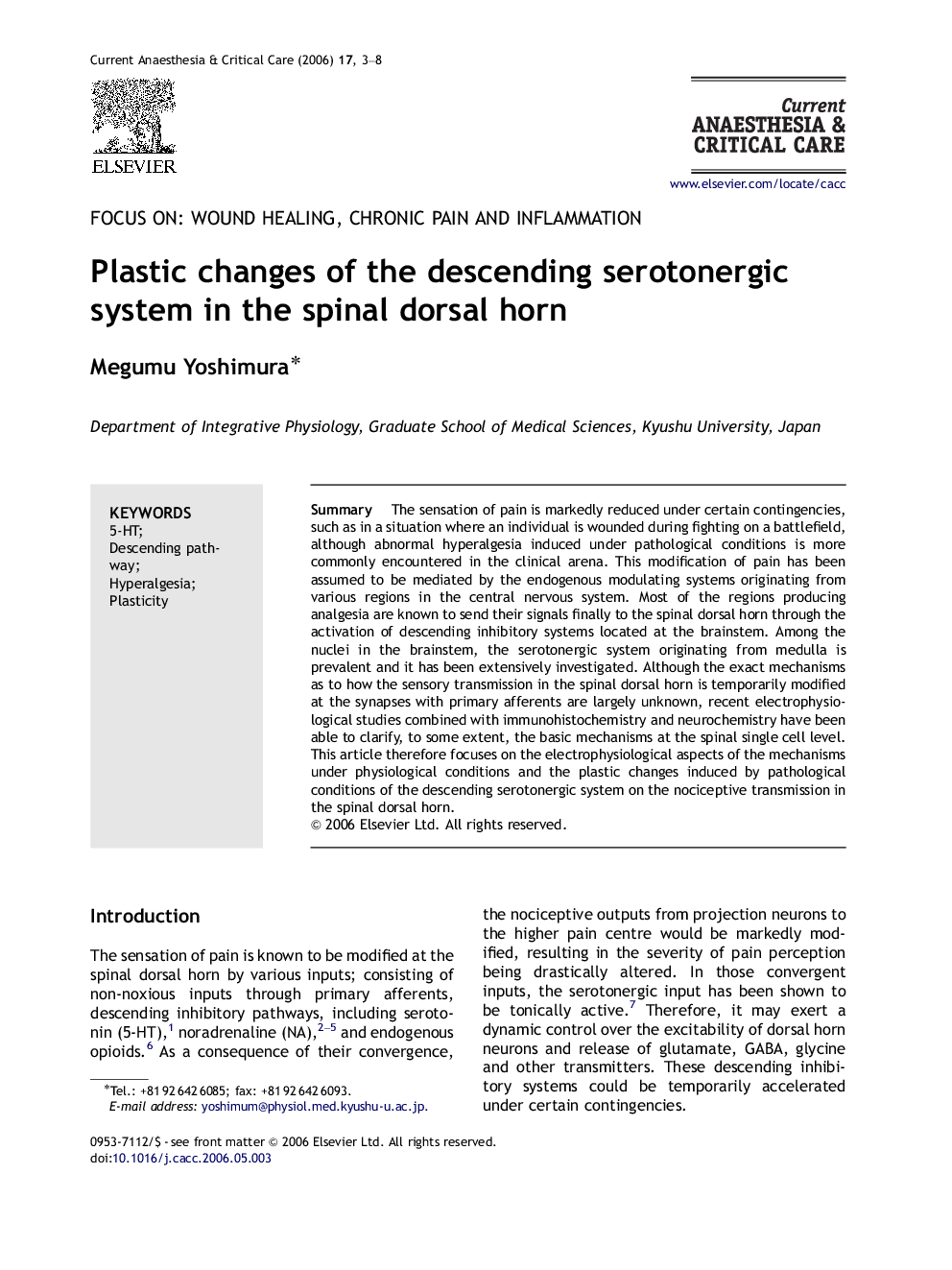| Article ID | Journal | Published Year | Pages | File Type |
|---|---|---|---|---|
| 2607753 | Current Anaesthesia & Critical Care | 2006 | 6 Pages |
Abstract
The sensation of pain is markedly reduced under certain contingencies, such as in a situation where an individual is wounded during fighting on a battlefield, although abnormal hyperalgesia induced under pathological conditions is more commonly encountered in the clinical arena. This modification of pain has been assumed to be mediated by the endogenous modulating systems originating from various regions in the central nervous system. Most of the regions producing analgesia are known to send their signals finally to the spinal dorsal horn through the activation of descending inhibitory systems located at the brainstem. Among the nuclei in the brainstem, the serotonergic system originating from medulla is prevalent and it has been extensively investigated. Although the exact mechanisms as to how the sensory transmission in the spinal dorsal horn is temporarily modified at the synapses with primary afferents are largely unknown, recent electrophysiological studies combined with immunohistochemistry and neurochemistry have been able to clarify, to some extent, the basic mechanisms at the spinal single cell level. This article therefore focuses on the electrophysiological aspects of the mechanisms under physiological conditions and the plastic changes induced by pathological conditions of the descending serotonergic system on the nociceptive transmission in the spinal dorsal horn.
Related Topics
Health Sciences
Medicine and Dentistry
Anesthesiology and Pain Medicine
Authors
Megumu Yoshimura,
